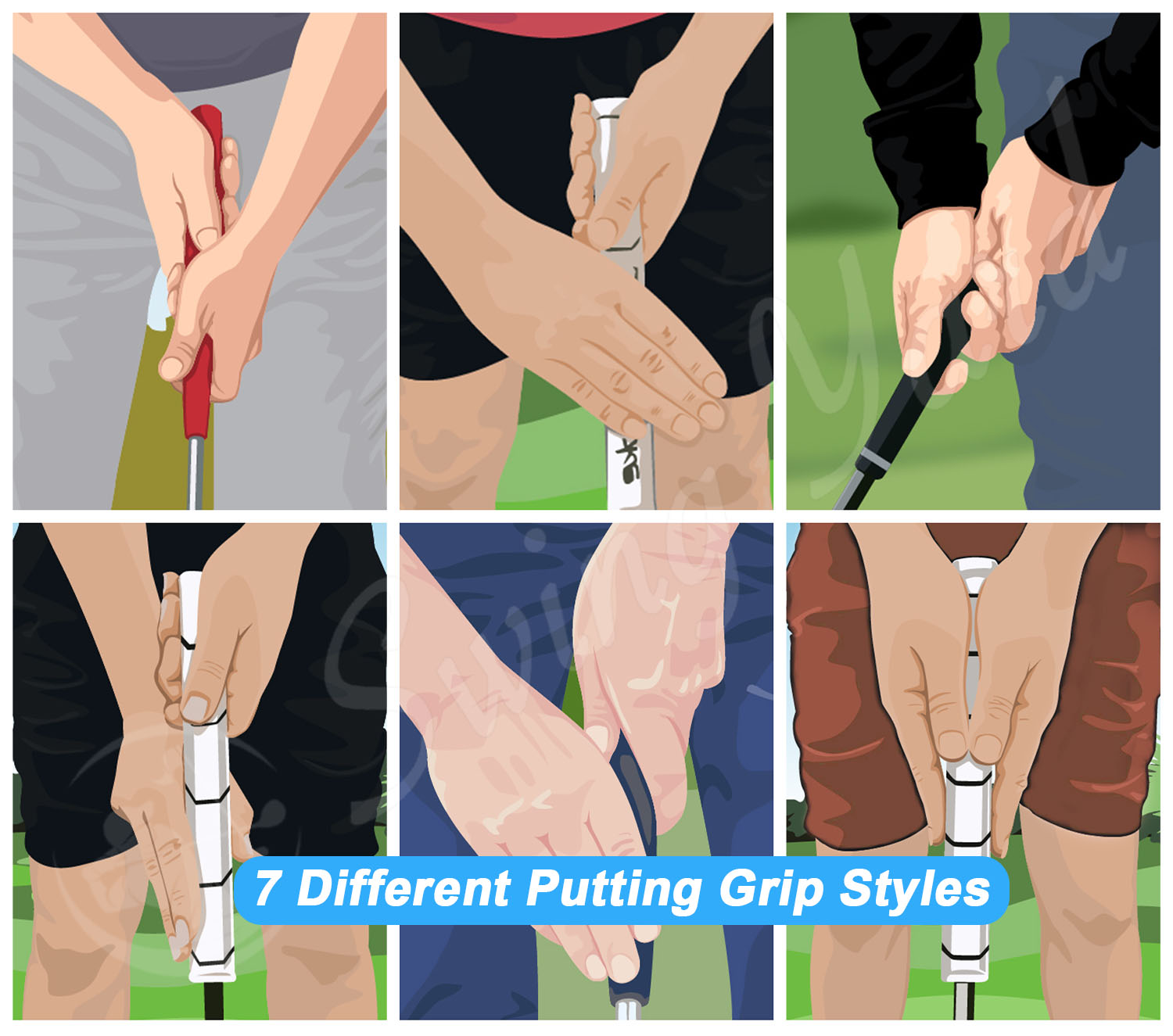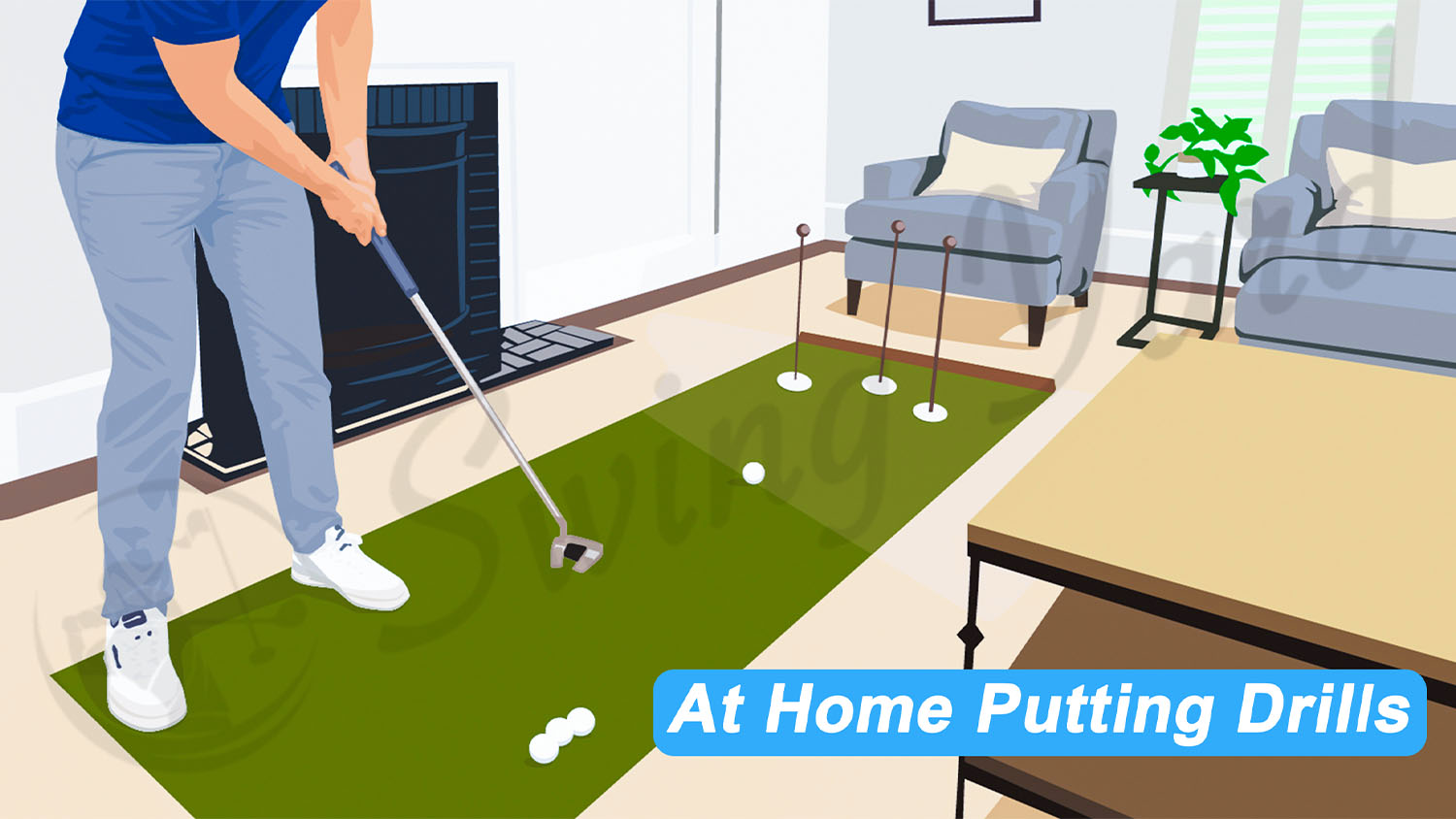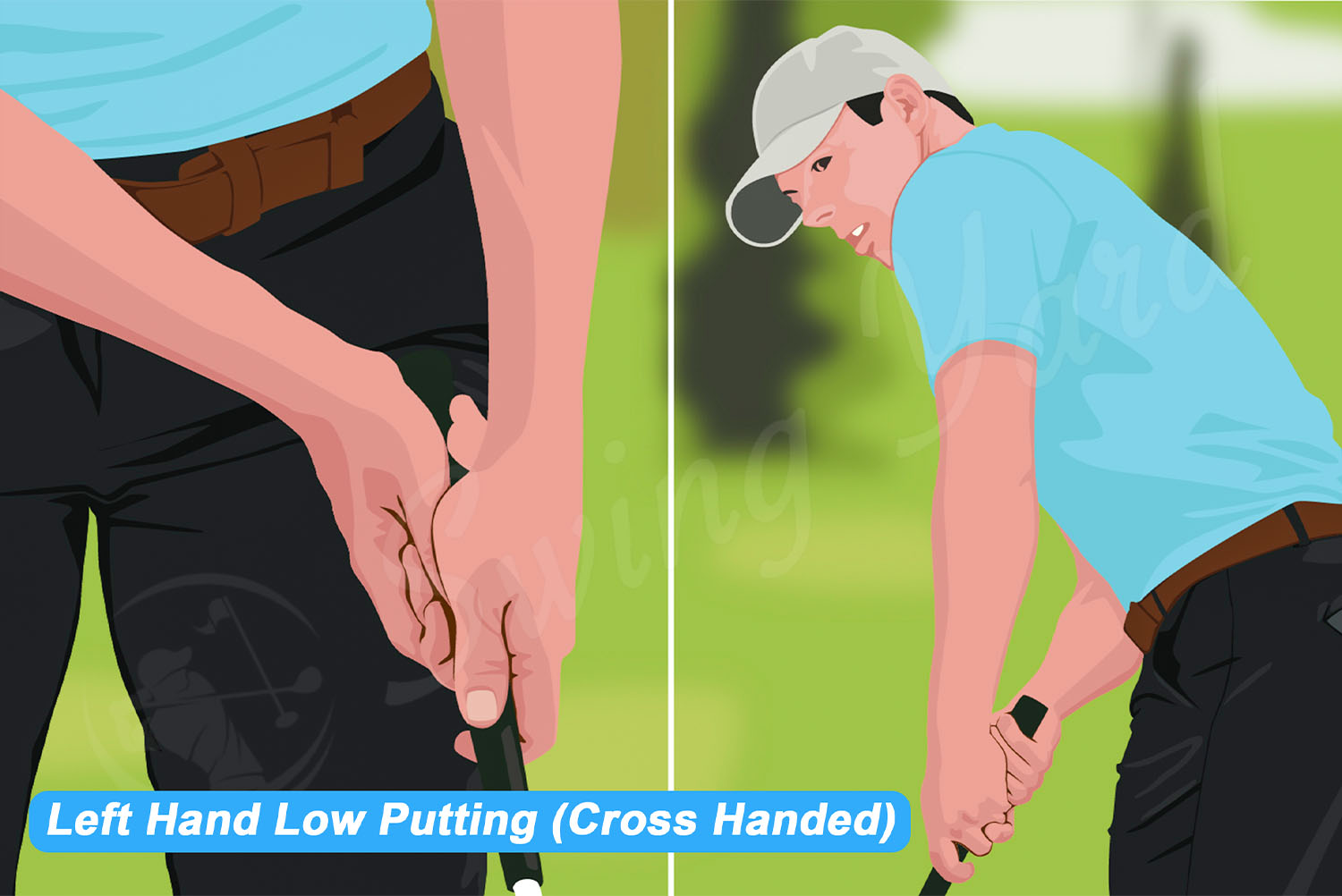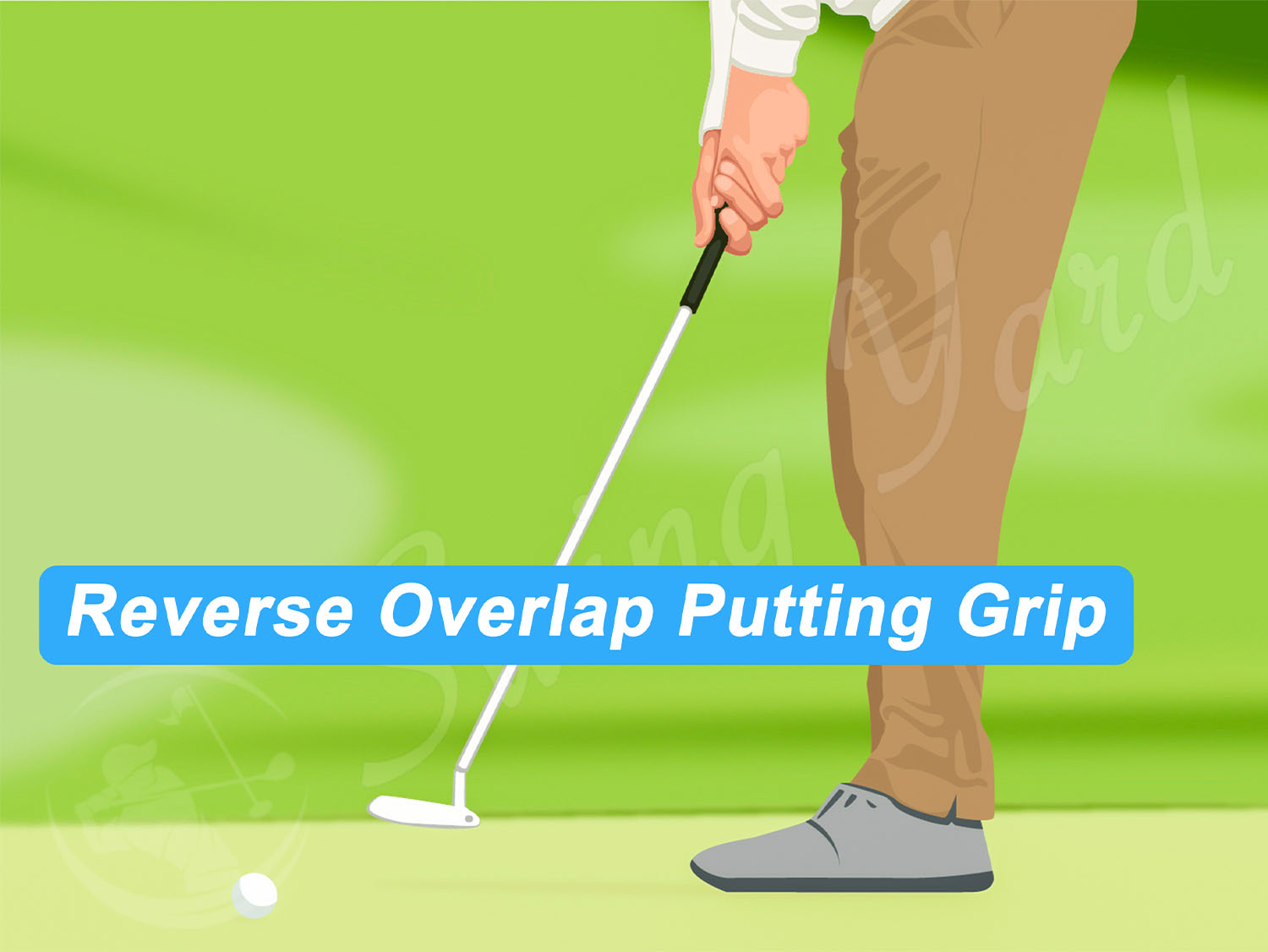Lag Putting: How to Avoid the Dreaded 3 Putt
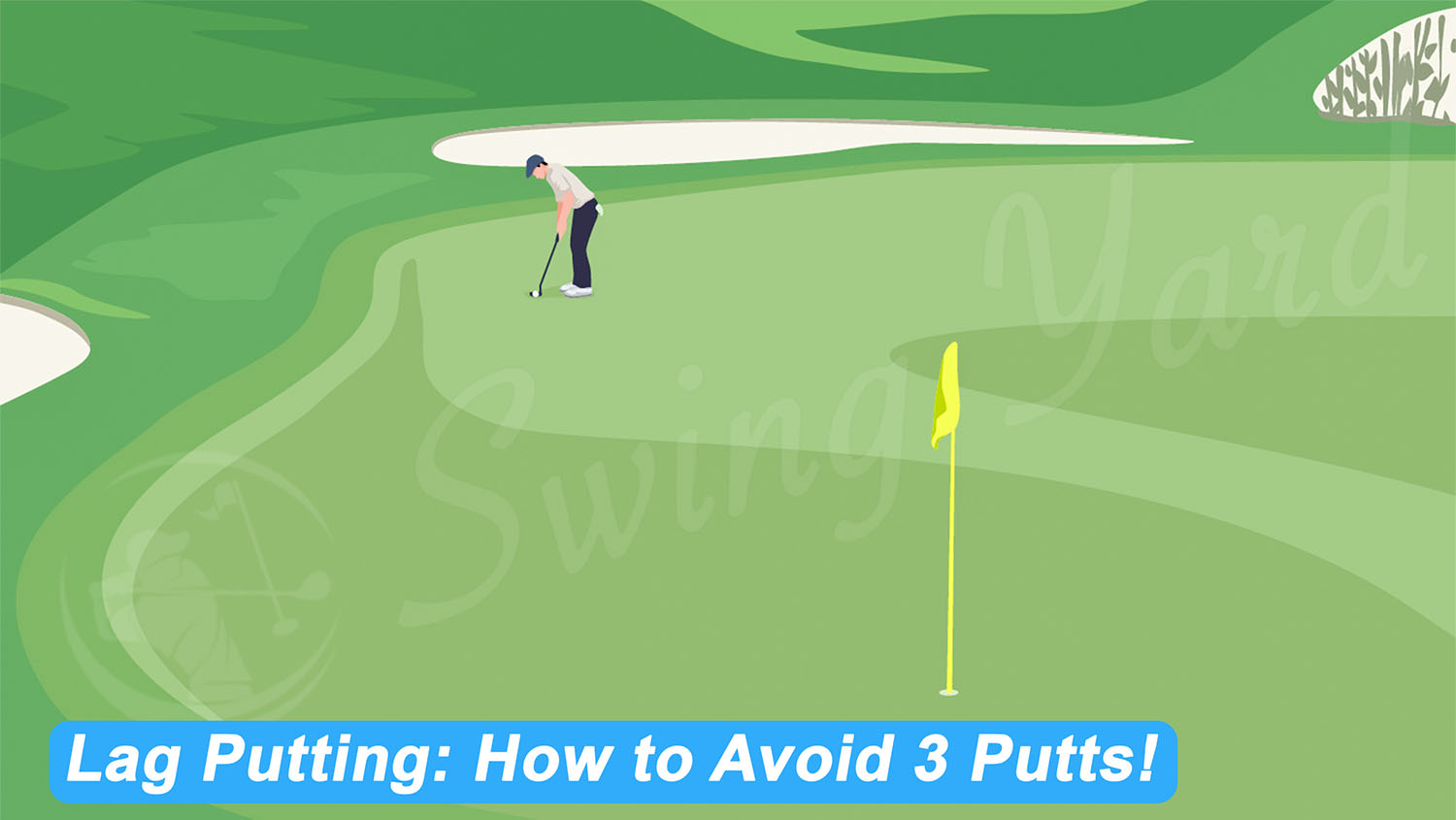
By Coach Erik Schjolberg – Aug 18, 2023
Contents
Key Takeaways – Lag Putting Tips
- Good lag putting is the key to avoiding 3 putts
- Lag putting is NOT about trying to make the first putt
- Good lag putting takes skill in both alignment AND distance control
- Distance control is mostly done by controlling backswing length
Have you ever made a three putt and wondered “how the hell did that happen?!” BUT, it happens to golfers every single round, and it has everything to do with the lag putt.
If you can’t get your ball close to the hole the first time, three putts come into the equation.
As a golf professional, I always feel like a three putt is a complete waste of strokes. There is just no reason for it. If you want to understand the lag putt, how to get better at lag putting, and what it takes to be a great lag putter, I got you covered.
What Is Lag Putting?
Lag putting happens when you are far from the hole and take your first putt to try and get your golf ball as close to the hole as possible. The reason this is often referred to as a lag putt instead of just a first putt is that you don’t always assume you will make a lag putt.
- In fact, the strategy of a lag putt is very often just to get it close to the hole so the second putt is a gimmie
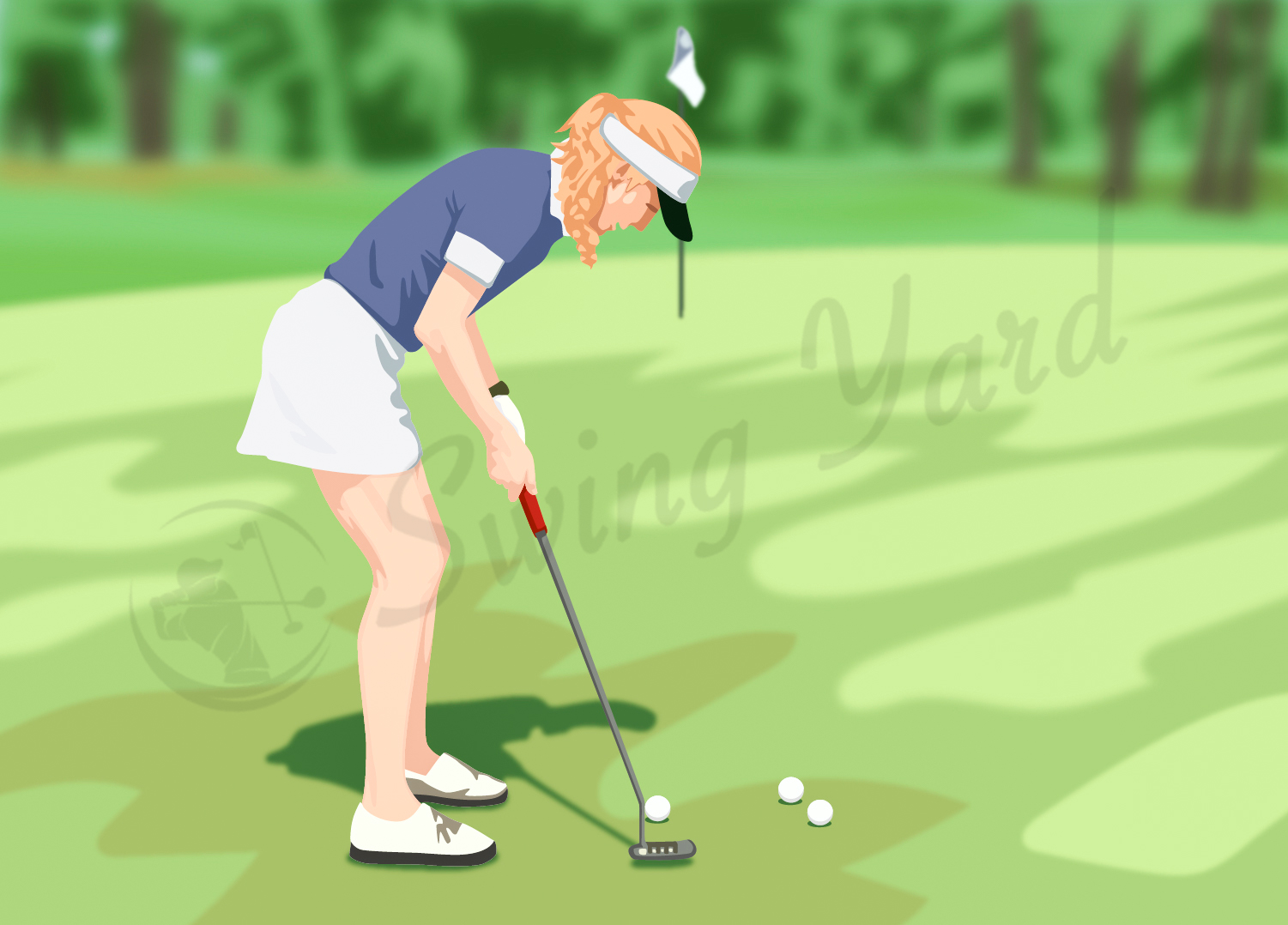

(check out our ranking of the very best putters for women in this post)
Lag putting is difficult; in fact, I would rather have a four-footer for par than to have a long lag putt for birdie. Unless you have the speeds down and are confident about your stroke, it’s sometimes hard to get a lag putt in the hole.
Key Characteristics of a Great Lag Putter
Lag putters that can consistently get the ball within that two putt range do some of the same things in their stroke and their routine. If you are a poor lag putter, you will want to head out to the practice green and learn some of this as soon as possible. In addition, if you’re a plum bob putter, you’ll need to change your approach for these longer putts.
1. Consistent Pre Shot Routine
The average amateur golfer steps up to the ball, takes a few practice strokes, and makes contact. There is very little conscious thought about the putt distance, the proper lag approach, and even the length of the backswing.
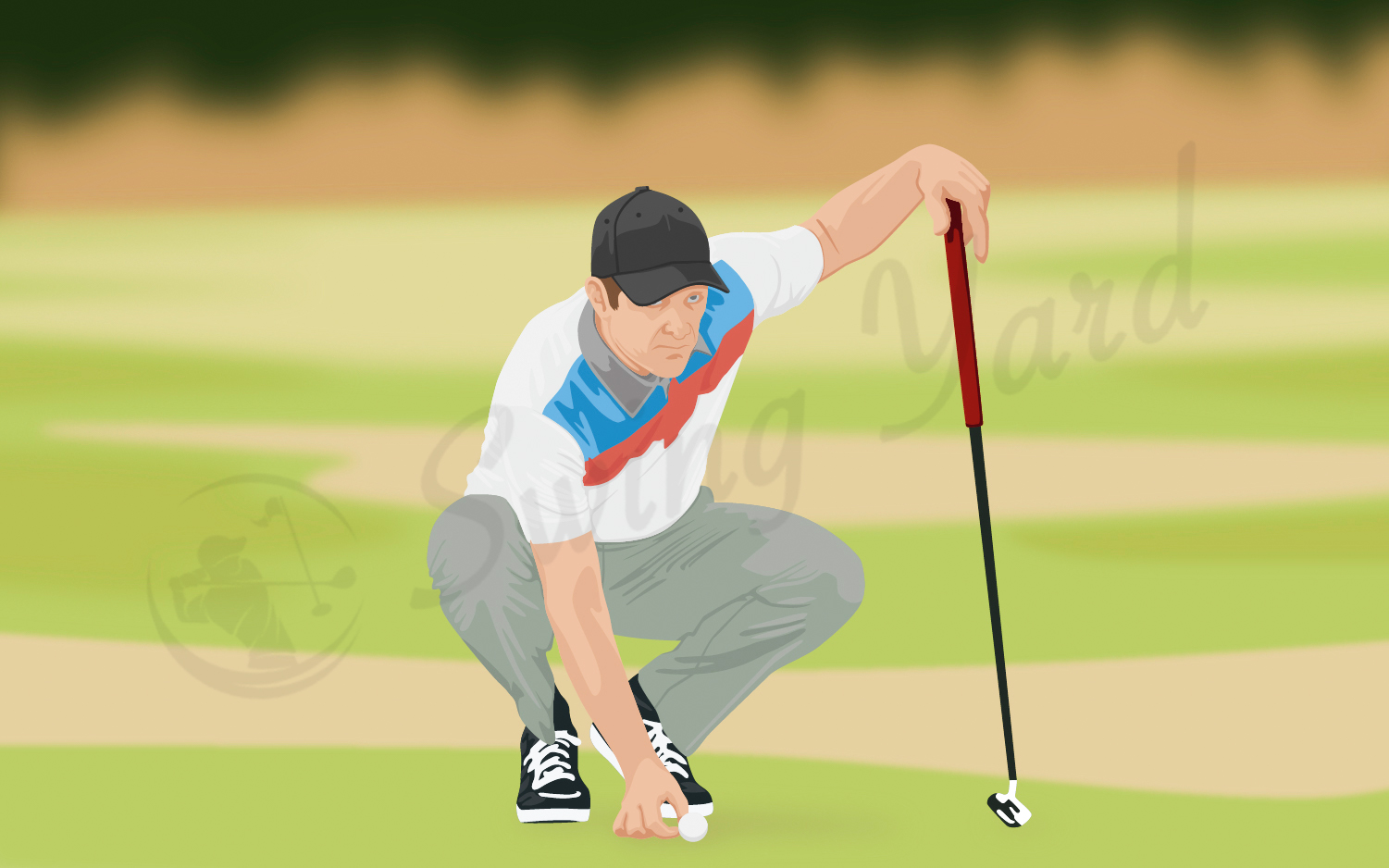

If you want to become a good lag putter, you will need a pre shot routine that is the same every time. In fact, I have it listed FIRST on my putting tips list (found here).
Ever since I learned to play golf, I’ve kept my pre shot routine the same for all putts I take; regardless of distance, it’s helpful.
2. Walk All The Way To The Hole
Great lag putters know that their brain needs some time to adjust to the fact that they will be hitting longer putts. When you never walk all the way to the hole, it’s very hard to comprehend exactly how large of a swing you must take.
When you walk up to the green, mark your ball, and then walk to the hole and then back to your ball.
This is especially important if you are looking at uphill or downhill putts. Walking to the hole gives you some feel for what it takes to make the putt. For a more advanced technique that many pros swear by, read about the Aimpoint Express putting method that helps you read slopes better.
3. Head Down Through Impact
Keeping your head down through impact will ensure your lag putt gets to the hole.
When you lift your head up as the putter head is reaching the golf ball, you lose a bit of distance. The putter head opens up, and you don’t make contact that is quite as solid.


One of amateur golfers’ most common mistakes is lifting their heads up as they make impact. Looking at the ball won’t help; stay stable through your putting stroke, and the longer distance putts will get closer to the hole.
4. Stroke Length Awareness
I’m a feel player – I don’t love getting too technical with the length of my putting stroke and spending too much time focusing on it. However, it’s important to make sure you are paying SOME attention to your putting stroke length.
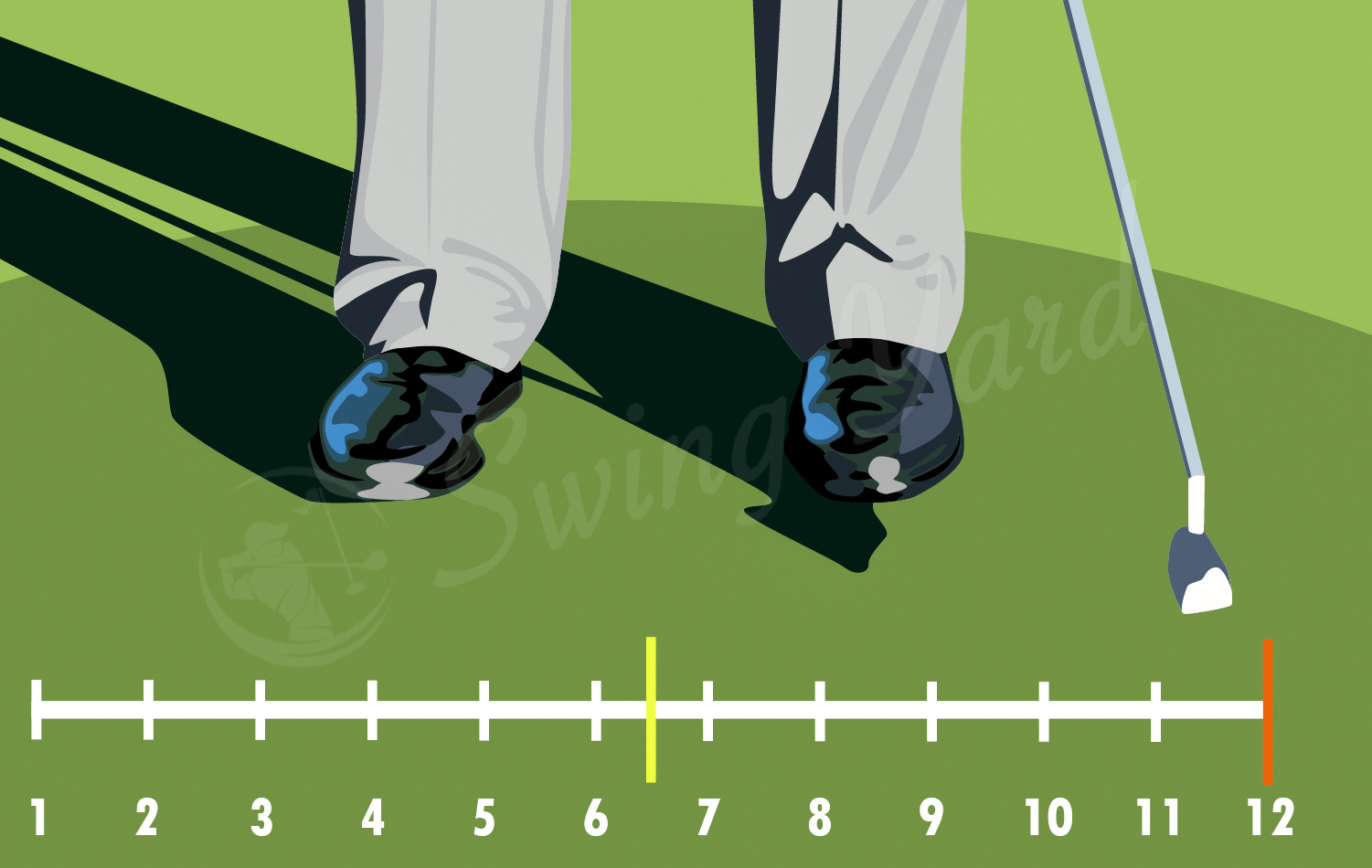

I do have a general idea as to how far the putter goes back for a 20 foot putt, a 30 foot putt, a 40 foot putt, etc. You can set up some tees on the putting green when you practice to narrow down the proper stroke length.
Lag Putting Drills
One of the best ways to learn how to hit a good lag putt is to practice on the putting green (or at home if you have enough room and a smooth surface); here are some of my favorite lag putting drills for learning how to get optimal distance control and alignment with your lags.
1. Tee Behind The Hole
Pick a putt that is at least 20-30 feet from the hole. Take about five golf balls and set yourself up at this distance range. Walk to the hole and take a tee and place it about a foot behind the hole.
Your goal is to leave these putts between the hole and that tee.
Anything short of the hole is kind of a waste because you never gave it a chance to go in. Anything that goes past the hole is good, but too far past the tee, and you are leaving yourself room for three putts.
Golf scores add up so quickly on the putting green, and ensuring you stay within this range will help lower the scores.
2. Circle Drill
If you have a way to create a circle around the hole, this is a great way to make sure a long putt will end up near the hole when you get to the golf course. You can make this circle with tees or even use something like a lag putting circle that can be placed around the hole.
Some golfers use the manilla folder drill and place a manilla folder just after the hole to try and get the ball to land in the cup or on the folder.
3. Ladder Drill
Traditionally, this one is more for short putts, BUT, the ladder drill helps players with speed and distance control. So I think it’s good for lag putting as well – with some slight modifications.
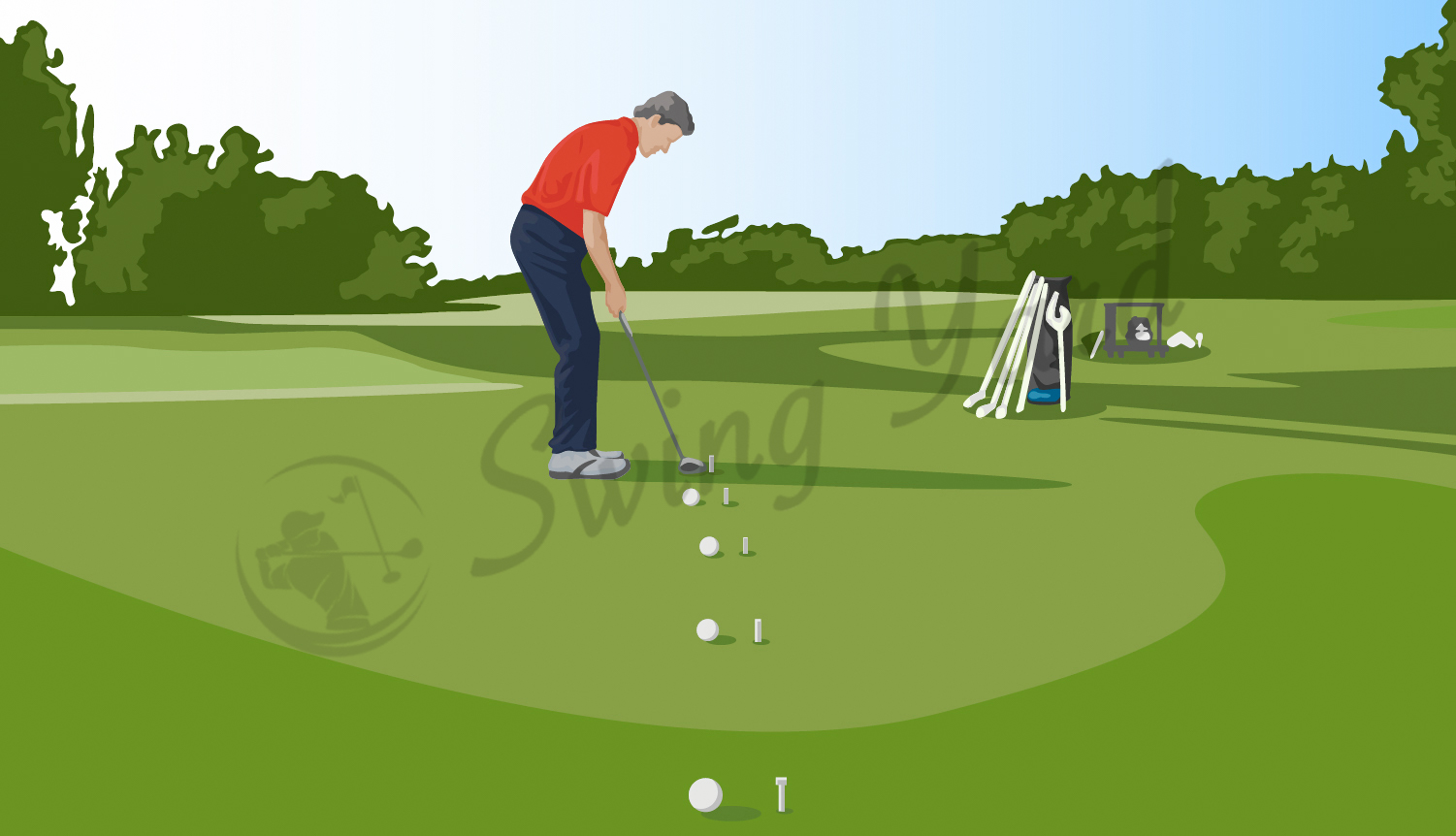

With a normal ladder drill, you’d start with a putt about 3 feet from the hole, make that one, and then move back to five feet, seven feet, nine feet, etc. This one is good to do when you want to practice putting in the office or at home as well.
With the modified lag putting version, start at around 15 feet instead of the 3 feet mark, and work your way back to 40+ feet. The goal is to get all your putts to within 3 feet of the hole.
FAQ
Here are a few of the most commonly asked questions about lag putting and the ways in which you can become a better putter.
How can I improve my long putts?
The best way to work on long putts is to understand that a certain radius around the cup is acceptable. Don’t always aim for the back of the cup like you would on a short putt. Settle for anything within a two foot radius and get off the hole with a solid two putt.
What is a lag putt?
Lag putting means getting a golf ball close to the hole on your first putt so that the second putt is easily makeable. Great lag putters very rarely three putt, especially the ones that know how to break 70 in golf.
What is the secret to lag putting?
The secret to lag putting is to learn to focus on an area that surrounds the hole. The hole is a small target on some of these longer putts. If you can get the ball within a close distance to the hole, you will make quite a few more putts.
How do you practice lag putts?
The best way to practice lag putts is to take one putt from different distances around the green. Overall, on the golf course, you only get one chance. Try one from 15 feet, then 25 feet, then 20 feet, then 30 feet. The goal is to help your body and brain get used to the putting drills and start to understand different distances.
What grip do I use for lag putting?
Typically you want to use a consistent putting grip (like one of these) for both long and short putts. However, some players (like Collin Morikawa) actually switch their grip depending on how long the putt is. Grips like the claw grip (more on that here) are great for added stability on short putts, but can be hard to control distance on longer putts. So you could switch to something like a reverse overlap putting grip (explained here) on short putts.
Final Thoughts
Most people think that they struggle with putting greens because they can’t make 3 and 4 footers. I encourage you to challenge yourself and ask why you have 3 and 4 footers left to make.
Learn to become better at lag putting, and you will end up with more two putts and fewer issues with getting your long putts to the hole.
If you can master the lag putt, it may even give you more confidence in your ability to get the ball close to the hole with your iron shots.
If all else fails, try switching up the type of putter you normally use. You can read about the different types of putters in this article.



